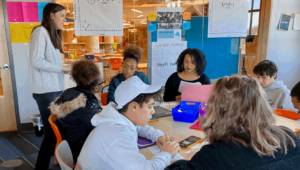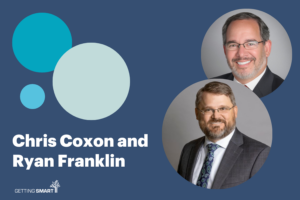Total Impact Leadership in Business and Education

“To prosper over time, every company must not only deliver financial performance, but also show how it makes a positive contribution to society,” said BlackRock CEO Larry Fink in a letter to CEOs. “Companies must benefit all of their stakeholders, including shareholders, employees, customers, and the communities in which they operate.”
With more than $6 trillion in assets under management, BlackRock is the largest investment management firm. It is remarkable, then, that the head of the world’s biggest investment service told CEOs to stop fixating on quarterly profits and focus on total impact.
“We recognize that the market is far more comfortable with 10-Qs and colored proxy cards than complex strategy discussions,” Fink writes. “But a central reason for the rise of activism – and wasteful proxy fights – is that companies have not been explicit enough about their long-term strategies.”
These strategies should include environmental, social and governance matters, according to Fink.
“Companies must ask themselves: What role do we play in the community?” Fink writes. “How are we managing our impact on the environment? Are we working to create a diverse workforce? Are we adapting to technological change? Are we providing the retraining and opportunities that our employees and our business will need to adjust to an increasingly automated world? Are we using behavioral finance and other tools to prepare workers for retirement, so that they invest in a way that will help them achieve their goals?”
Consulting firm PWC calls this approach Total Impact Measurement and Management. It includes a holistic view considering impacts on employment, taxes, environment, and society.

Better decision-making, risk mitigation, and stronger community support are all reasons for considering total impact.
PWC said there’s a significant opportunity to change the way we all do business using the momentum of the Millennium Development Goals set by the UN.
Considering the Total Impact of Schools
Like CEOs chasing quarterly earnings per share targets, educators have been chasing point increases on reading and math tests–that’s what standards-based reforms seem to be asking for. This myopic focus has had negative consequences–less art, music, and recess in elementary grades; less applied and career education in high school.
It’s time for total impact leadership in education. It’s time for community conversations that result in shared goals and a broad dashboard considering the total impact of schools.
Learning Outcomes
With exponential change in the nature of work, it’s a good time for school districts and networks to update their learning goals and graduate profile. MyWays from NGLC is a good example of a thoughtful outcome framework.
A total impact district or network would provide feedback to students against s detailed outcome framework like MyWays (summarized below) and would aggregate portions of that feedback for the community (recognizing that measures in some of these categories are quite immature and not suitable for accountability purposes).

Standardized test scores provide a sliver of information in a couple of these domains, but if we’re serious about college and career readiness, students and communities deserve broader feedback and evidence of growth. Recent reports from NGLC summarize the best thinking about measuring growth in these 20 competencies.
Students can be partners in collecting and sharing evidence with digital portfolios and student-led conferences.
Youth Development
In addition to a comprehensive learner outcome framework, districts and networks could report on important youth development outcomes and indicators including:
- Graduation rate (on time and total)
- Attendance rate
- Suspension rate
- % high school students with successful work experiences (these could be certified using NAFTrack)
- % students that feel safe and supported
- % students reporting healthy lifestyles
- % students confident in their ability to secure work (marketing)
- % students confident in their ability to deliver value (project management)
- % secondary students engaged in community service
Community Impact
To measure community impact, the following indicators would be useful reference points:
- % parents reporting satisfied or very satisfied with the quality of education
- % of HigherEd partners reporting satisfied or very satisfied
- Value of local employment
- Tax rate
- Bond rating
- % sustainable facilities
To community impact, you could add measures of community support including the number of business partners, youth and family support partners, and the percentage of parents/guardians actively involved.
In both business and education, there is a growing movement towards a broader measure of success. Community conversations like those outlined in Battelle’s Profile of a Graduate will build support for a total impact approach.
For more, see:
- It’s Time to Update Your Graduate Profile – Here’s How
- Kansans CAN: Redefining Graduate Profiles at the State Level
- Community Conversations Shape Portrait of a Graduate
- Measuring What Matters: A Framework Review
Stay in-the-know with all things EdTech and innovations in learning by signing up to receive our weekly newsletter, Smart Update.








0 Comments
Leave a Comment
Your email address will not be published. All fields are required.